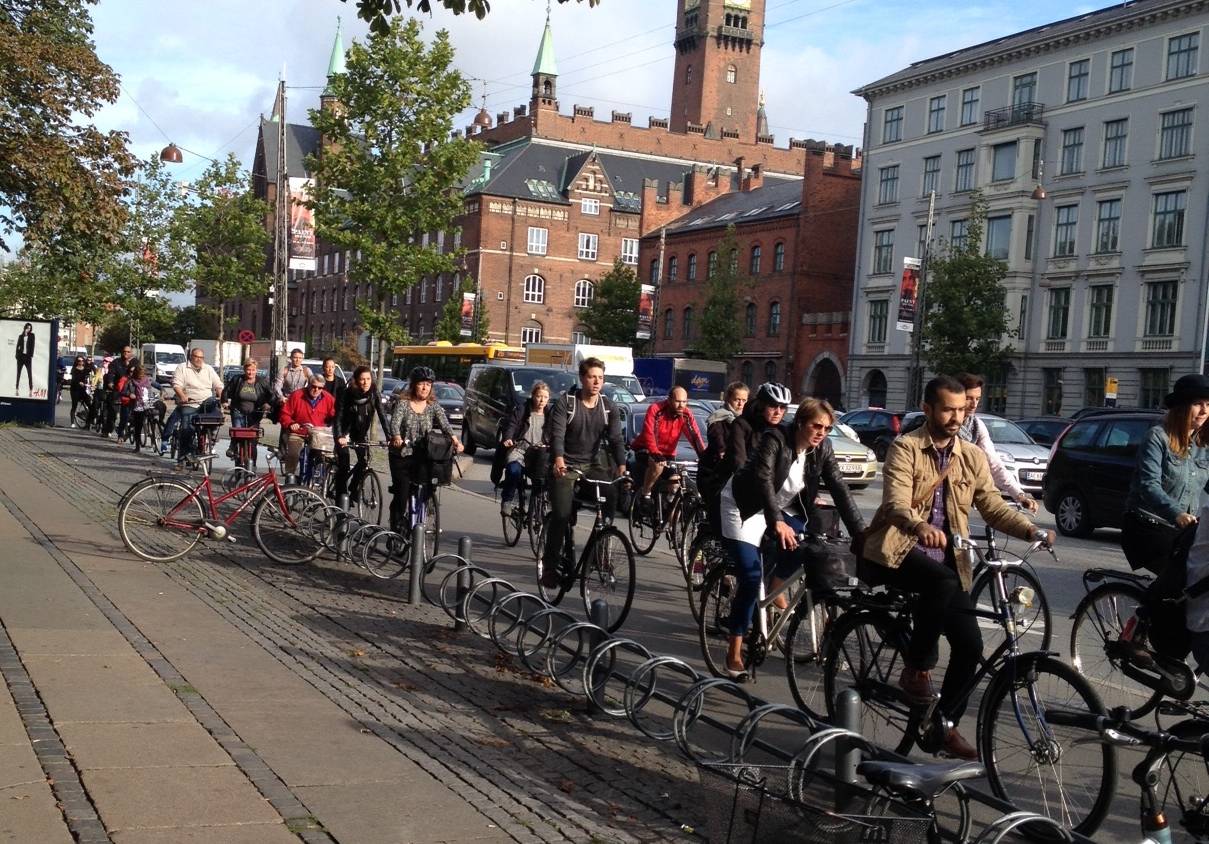Let’s Plan for Wow, Now
Meg Daly, Founder Friends of The Underline
Javier Betancourt, Downtown Development Authority
In late August, we traveled to Copenhagen with a group of thirty Knight Foundation-selected city leaders to study why Monocle Magazine calls Copenhagen the world’s most livable city. While our group hailed from public, private, and non-profit professions, we shared a similar question: How did Copenhagen become the world’s most livable city and how can we make our own cities more livable?
After five days of intensive classes and lots of biking around Copenhagen the answer was clear: planning and prioritization. Back in the ‘60s Copenhagen designed and committed to a plan that put their people first. At this time, Copenhagen was a car-centric city and their traffic problems were reaching a pitch. And, while the city did many things to make Copenhagen more livable, their city plan was key to giving the city back to the people, not the car.
Today, their principles seem simple, but at the time were radical. City officials committed to add engaging, accessible, public places so the people of Copenhagen could be with other people (people want to be with other people because it makes them happy.) And, since roads make up 25% of city space, and cars take up a lot more room than bikers and walkers, they created a plan for consistent, connected, safe biking, walking and transit infrastructure. Last they aligned their goals and prioritized their initiatives so they stayed on course to deliver on their promise to make Copenhagen more livable.
Years later, their plan worked. Biking is mainstream – the majority of people in Copenhagen bike to work and/or school using a vast network of safe, protected (provide a barrier from cars) bike and pedestrian lanes. They bike not because it’s mandated, but rather because it’s faster and more efficient. Plus, the city’s vibrant public spaces pulsate with activity while also offering a sanctuary from the rigors of city life.
Miami has two critical initiatives to make the city more livable: The Underline: a 10-mile linear park and urban trail below Metrorail from Dadeland South to the Brickell Station and the Downtown Development Authority’s push to make our Downtown more walkable and bikeable. By connecting The Underline’s off-road and protected trail directly to a minimum protected lane biking grid downtown, our city would have its first viable walking and biking commuter and recreational superhighway. Plus, The Underline will turn hundreds of acres of underutilized land into beautiful park spaces for 400,000 neighboring residents.
Why is this important? Because we are in crisis: Miami is one of the most dangerous places to walk and bike in the country: 4th most dangerous in the US for pedestrians and most dangerous place in the state for bikers. Also, our parks are threatened. With a series of county budget cuts, the Parks department’s budget has been slashed by 30% in less than a decade, leaving many of our green spaces and park infrastructure in declining condition and sometimes in peril.
But these crises are addressed in baby steps or are simply ignored. In light of the fact that bike lanes can be built at 1% of the cost of a highway, its shocking that most of our city’s bike master plans are implemented at a snail’s pace. The few brave souls in city government petitioning for bike infrastructure, rarely get protected bike lanes approved. Consequently, they implement shared lanes (bicyclist and car share the road) because no one wants to give up profitable parking spaces or put our streets on road diets (narrowing streets) producing more bike lane real estate.
Likewise, even though green spaces are proven economic drivers, are critical to residents’ “happiness”, and in many instances define a city (NYC Central Park, London Hyde Park, Chicago Millennium Park), in Miami, we must fight for their survival.
How do we reverse this trend? By demanding and implementing a city plan that makes our city more livable. We must embrace and promote our green spaces and applaud innovative visions. We must do radical, excellent things that wow the world, like build an iconic 10-mile linear park and urban trail. We must create a connected, safe bikeable and walkable downtown that keeps our employees and city moving more efficiently and effectively.
There’s a saying, if you fail to plan, plan to fail. There are models for great cities. We can borrow from those ideas yet make them Miami’s own.

Let’s plan for Wow, now.